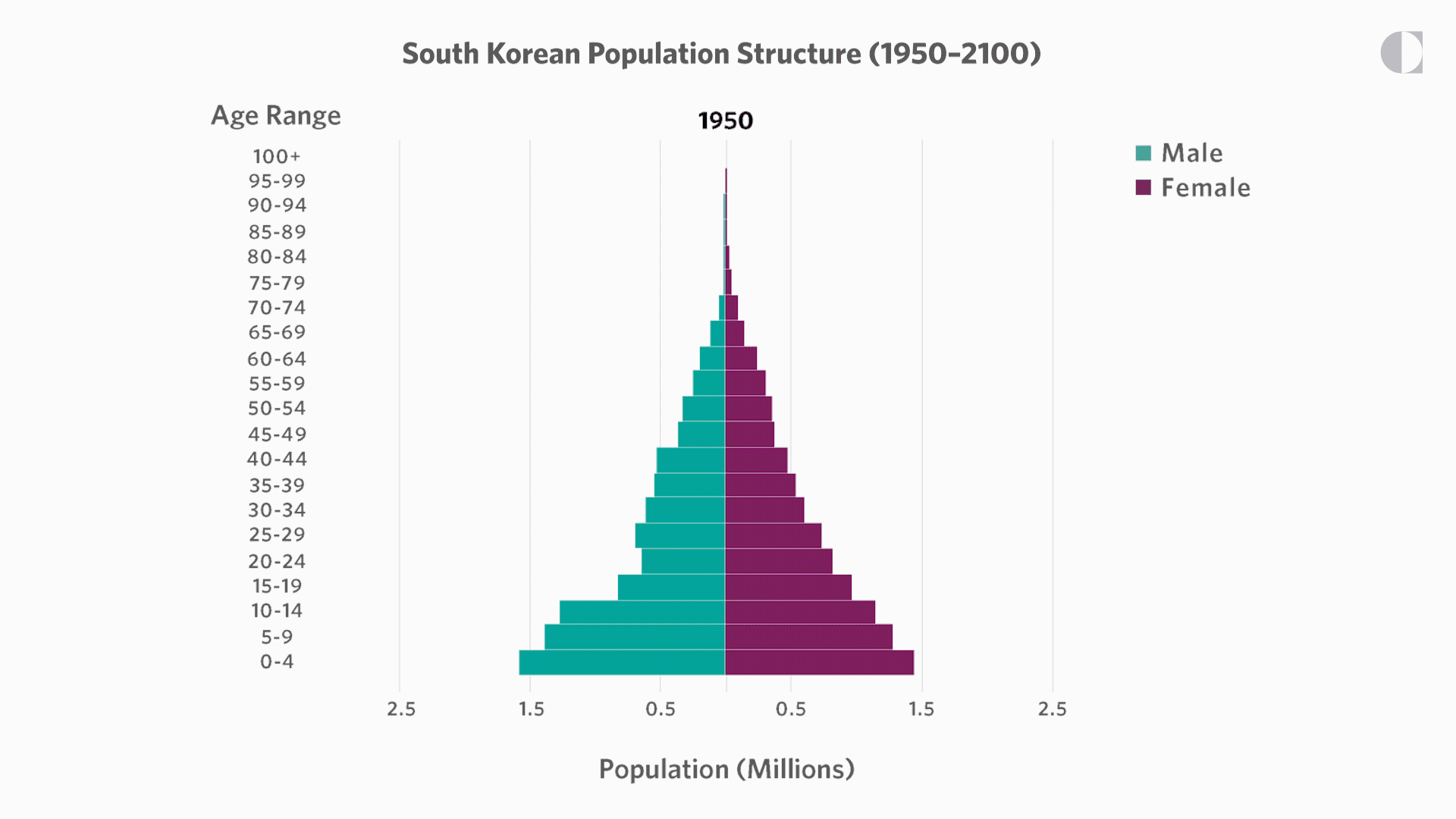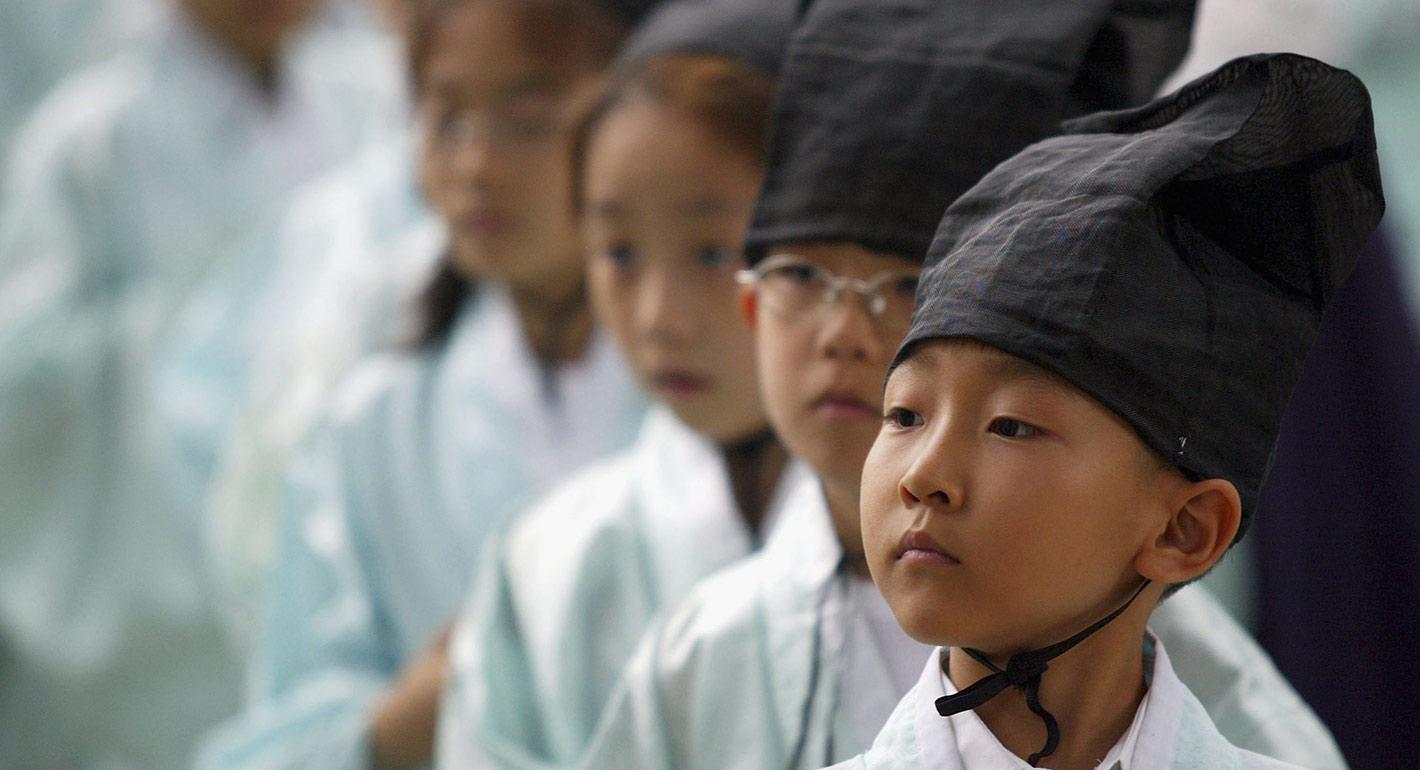How long can South Korea retain its global economic and technological competitiveness? Will the country maintain credible deterrence and defense postures well into the future? Are existing socioeconomic inequalities likely to worsen with worsening demographic trends? These questions lie at the heart of South Korea’s demographic trajectory.
South Korea’s ability to comprehensively address its demographic transition will affect every facet of its well-being, international image, national security, and even potential post-unification dynamics. This compendium examines various dimensions of South Korean society and the country’s geopolitical influence in light of its unprecedented demographic changes, which are already underway.
A Harbinger of Coming Demographic Shifts
The world as a whole is experiencing a global demographic shift. By 2050, one in six people will be over the age of sixty-five, up from about one in eleven people in 2019. While all societies will experience this transition over the course of the century, South Korea is ahead of the curve. In 2020, South Korea’s population declined for the first time, with the number of births down 10 percent from the previous year. South Korea’s total fertility rate in 2020 was 0.84 births per woman—the lowest figure in the world and well below the replacement-level rate of 2.1. South Korea’s fortunes over the rest of the twenty-first century will be shaped in no small part by how it manages its demographic profile (see figure 1).

As figure 1 shows, South Korea experienced a rapid demographic transition after the Korean War, triggered by the country’s explosive economic development in the 1960s and 1970s. By the 1990s, South Korea had gone from being one of the poorest nations in the world to one of the most advanced, prosperous nations. But over this same period, increased prosperity and influential family planning policies caused a sharp decline in South Korean birth rates from 6.1 children per woman in 1960 to around 1.6 by 1990.
South Korea is not alone in experiencing this trend. At least thirty-four countries globally have populations where senior citizens (sixty-five years and older) outnumber children (under fifteen years), and by 2050 that tally could be ninety. Most of the world will need significant economic, social, and cultural transformations to sustain economic development, provide greater social welfare, mitigate socioeconomic inequality, and ensure a suitable quality of life for the elderly.
The Manifold Challenges of an Aging Population
This collection of pieces examines multiple challenges facing South Korea as it adjusts to a rapidly aging and declining population, but the authors also envision possibilities for positive change in South Korean society. Sook Jong Lee sets the scene by describing the differences between various South Korean generations’ life experiences and outlooks, including how these perspectives could shape the future of South Korea’s democracy and politics.
Increasing immigration is a remedy South Korea must consider to mitigate its demographic woes, but increased immigration will also trigger intensifying discussions on what it means to be a Korean in the twenty-first century. Aram Hur analyzes the impact of immigration on South Korea’s national narrative and democracy, while Erin Chung addresses the impact of immigration policies on South Korean women, including immigrants to the country. Kathryn Botto provides an over-the-horizon glimpse of how South Korea’s demographic fortunes could affect the prospect of Korean unification and the place a unified Korea would have in Northeast Asia.
The effects of population aging will reach nearly every aspect of South Korean society, including the economy and national security. Chung Min Lee assesses how the South Korean military will need to undertake fundamental and bipartisan defense reforms to maintain a strong defense posture while offsetting declining conscription pools. Kyle Ferrier illuminates how South Korea can capitalize on emerging technologies to stave off the negative impacts of a shrinking labor force and declining productivity on the country’s economy.
South Korea’s looming population crisis requires not only a whole-of-government response but also a new social contract and a fundamental reappraisal of how the country seeks to maintain its global competitiveness. Done correctly, South Korea can offer key lessons for other countries that are or will be grappling with similar demographic transitions. Rising social welfare costs must be met even as state revenues decline, and South Korean industry has to be revamped to foster more resilient high-tech supply chains. The country’s military will face widening security threats even as it draws fewer conscripts and recruits.
Failure is not an option. Just as South Koreans engineered the so-called Miracle on the Han River with rapid economic development and restored a vibrant democracy, they must now provide a new governing model that maximizes sustainable growth, more equitable prosperity, and a broader sense of social justice.
This project was made possible with support from the Korea Foundation.



